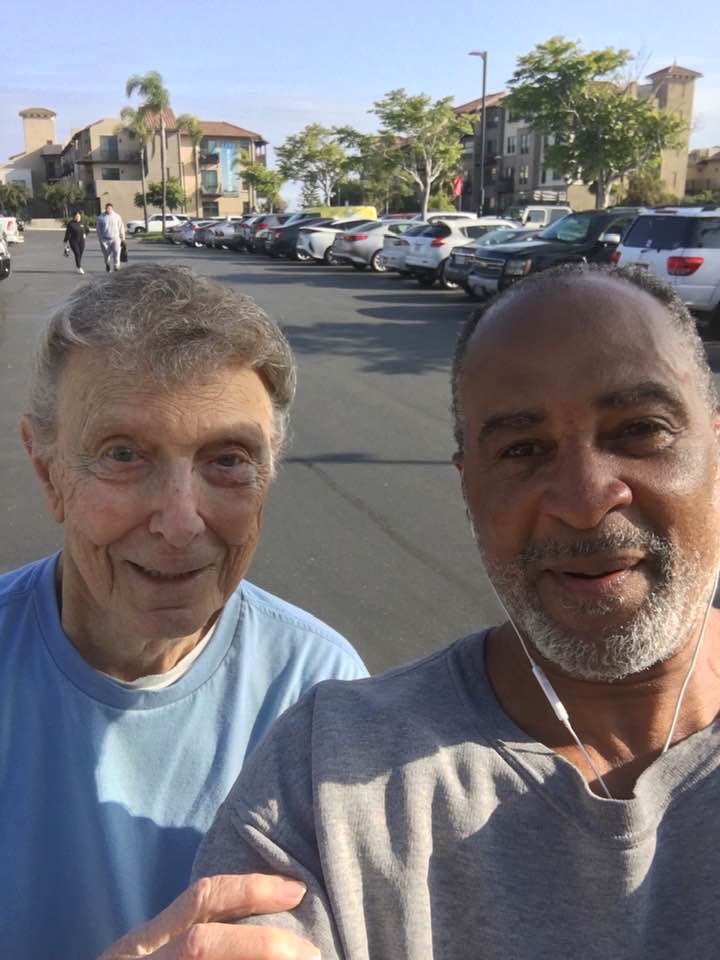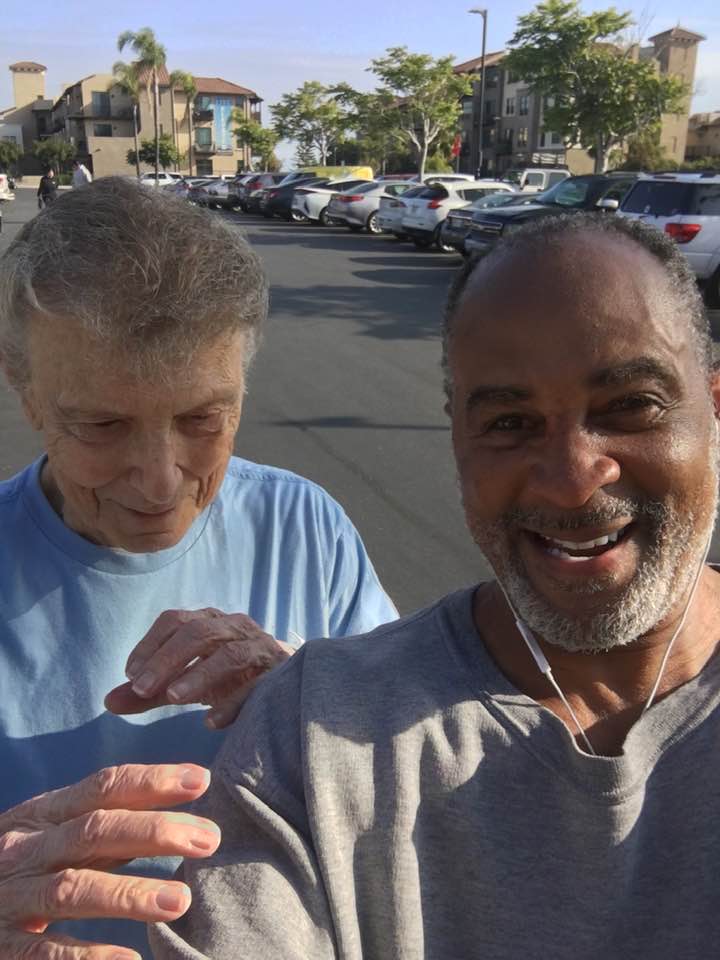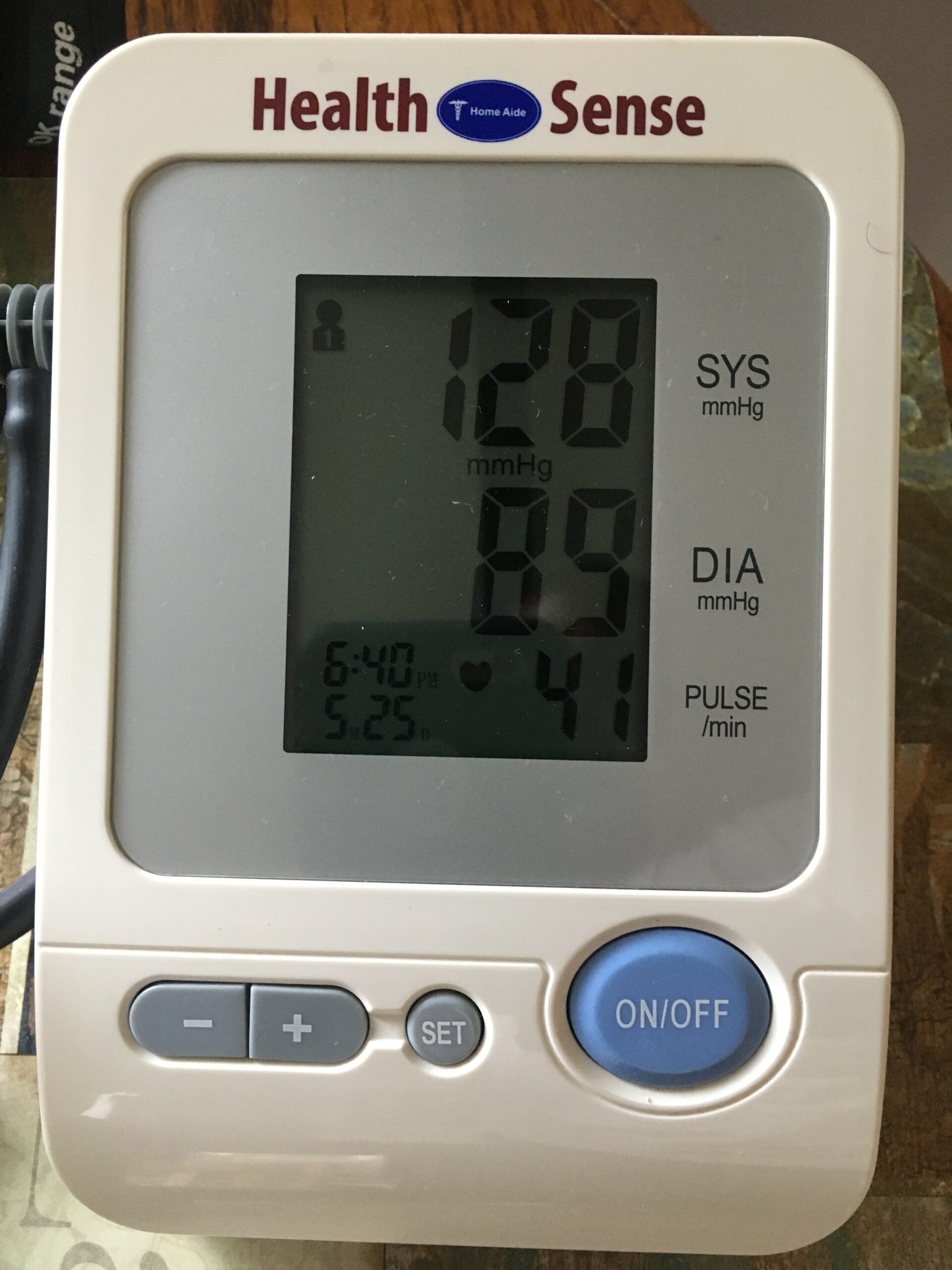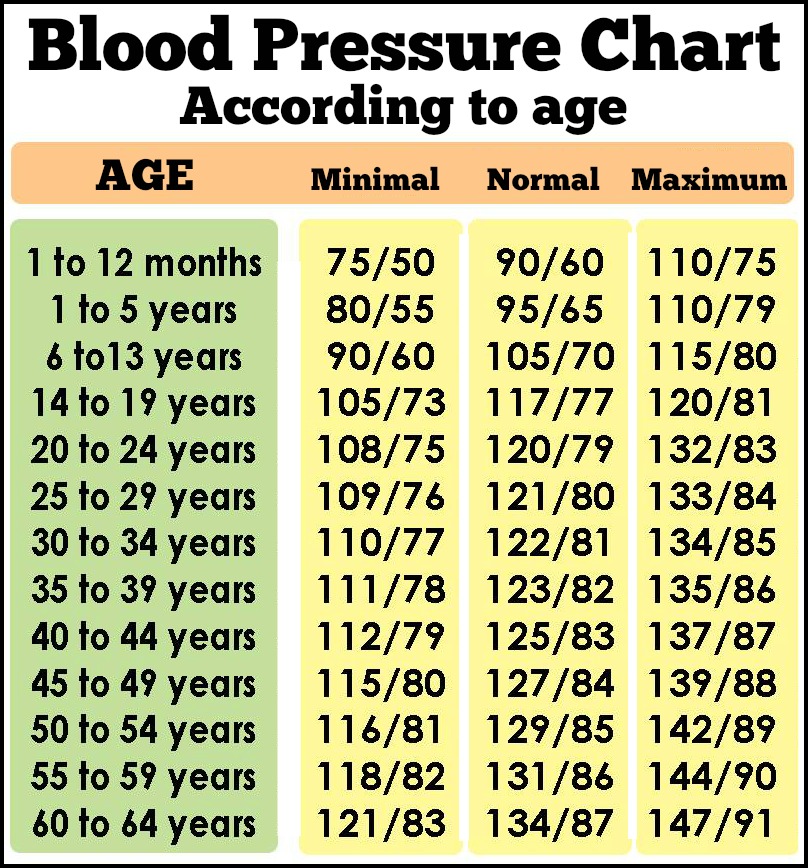The Best Exercises For Your 50s, 60s, 70s—And Beyond (#GotBitcoin)
Everyone knows that exercise is good for you. While it can’t stop the aging process, it can increase life expectancy and keep disabling conditions—from heart disease to depression—at bay. The Best Exercises For Your 50s, 60s, 70s—And Beyond (#GotBitcoin)
These Exercises Engage Multiple Muscle Groups And Promote Balance:
But as we age, it’s no longer enough to do only our favorite exercise, be it tennis, running, yoga or Tai chi. That’s because aerobic capacity, muscle mass, bone density, flexibility and balance all decline over time—and each requires some attention.
“It isn’t until we hit our fifth decade that we start to appreciate that we need more balance, muscular fitness and flexibility in our exercise routines,” says Cedric Bryant, president and chief science officer of the American Council on Exercise. “They are so important to allowing us to maintain our functional capabilities and independence.”
Related:
When Is It Safe For Children To Start Strength Training?
Becoming A Exercise-aholic Can Be A Disease
How To Bulk: A Complete Workout And Nutrition Plan For Muscle Growth
Does Metformin Block The Health Benefits Of Exercise? Podcast With Ben Miller, Ph.D.
What follows are five exercises each for people in their 50s, 60s, 70s, 80s and beyond, plus bonus activities for each decade, recommended by sports doctors, exercise physiologists and physical therapists. Some—including squats, planks and lunges—appear in different forms in each decade.
All of these exercises can be done with little to no equipment and are designed to engage multiple muscle groups and promote balance. When combined with an aerobic activity, they come close to making up a total fitness program.
The bonus activities are a reminder to add something new and fun to your routine periodically. This can boost cognitive as well as physical fitness.

If you are unsure of your fitness level, start with the recommended routines for the later years and build up gradually to your age. “The mistake people make is to ramp up too quickly,” says Jordan Metzl, a sports-medicine physician at the Hospital for Special Surgery in New York.
Each routine is recommended two or three times a week, with at least one day off in between. They can be completed on the same day as an aerobic workout or on alternating days. The U.S. Department of Health and Human Services recommends that individuals get at least 150 minutes of moderate exercise or 75 minutes of vigorous exercise each week, preferably spread over five or more days. (With moderate exercise, an individual cannot be “overly chatty but can answer basic questions,” says Dr. Bryant; with vigorous exercise, talking becomes difficult.)

If you lead a sedentary life or have chronic health conditions, consult your health-care provider before starting a new exercise program. Form is also important to prevent injury and ensure you are using the right muscles, says Tom Buford, associate professor of medicine at the University of Alabama at Birmingham (UAB) and associate director of the UAB Center for Exercise Medicine. So consult with a fitness professional if you feel you need guidance.
When you get to the recommended number of repetitions, “you should feel that you are really done,” says Sarah Baird, a physical therapist and certified strength and conditioning specialist in Ann Arbor, Mich. “If you can keep going, it’s time to make the exercise more challenging.”
Does Plant Protein Build Muscle as Well as Meat?
According to a new study, the answer is yes. Researchers found that vegetarian protein is just as beneficial for muscle mass and strength as animal protein.

My Blood Pressure Reading 5-25-2023 (Age 62)
In Your 50s
Many people in their 50s may not run or swim as fast as they used to, and may find that it takes longer to recover from a strenuous workout. The goal of exercise often shifts from setting performance records to feeling good and maintaining health and physical function, says Summer Cook, an associate professor in the department of kinesiology at the University of New Hampshire.
To maintain muscle power and bone strength, experts recommend adding some high-intensity exercises, such as jump squats, that require short bursts of intense energy. These workouts are more effective than many other fitness programs in treating conditions including type-2 diabetes, depression and the muscle loss that accompanies aging, according to the American College of Sports Medicine.
“Do not be afraid of intensity,” says Dr. Metzl, who recommends that his patients do some high-intensity exercises two days a week.
1. Jump Squats
Build the muscles of the thighs, hips, core and buttocks. Stand with your feet shoulder-width apart and your hands on the back of your head or straight in front of you. Lower your body into a squat, ideally until your thighs are parallel to the floor. Keep your chest upright and make sure your knees are directly above your feet. Pause. Jump. As you land, start the next squat. Repetitions: Start with 3 sets of 5 and work up to 3 sets of 15.
2. Single Leg And Side Planks
Increase core strength and improve balance. Get into a push-up position with your weight on your hands or your forearms. Keep your body in a straight line from your feet to your head. Lift your right leg 8-10 inches from the floor. Hold the pose for 15 to 30 seconds and work up, over time, to 1 minute. Switch and do the same with your left leg. For a side plank, assume a plank position on your left side, propped on your left hand or forearm. Raise your hips and keep your body in a straight line from feet to head. Hold for 15 to 30 seconds and work up, over time, to 1 minute. Switch to your right side.
3. Jumping Lunges
Strengthen the legs, core and back, and enhance balance. Stand with your feet hip-width apart. Place your right leg forward in a lunge position with your right knee bent in a 90-degree angle and your right foot directly beneath the knee. Bend your left elbow and touch it to your right knee. Your left leg should be bent behind you and hover above the floor. Jump and switch your legs midair so you land in a lunge position with your left leg in front. Repetitions: Start with 3 sets of 3 and work up to 3 sets of 10.
4. Burpees With Push-Ups
Build overall strength and cardiopulmonary fitness. Stand with your feet shoulder-width apart and your arms at your sides. Squat. Place your hands on the floor in front of you. Jump your feet back so you are in a push-up position. Do a push-up. Jump your feet back into a squat. Rise to standing. Repetitions: Start with 3 sets of 5 and work up to 3 sets of 10.
5. Overhead Push Presses With Squats
Strengthen the arms, upper body, thighs, hips and buttocks. Stand with your feet shoulder-width apart. Hold a pair of dumbbells in front of you, with your palms facing each other. Squat and touch the weights to the floor in front of you, keeping your back straight. As you rise from the squat to a standing position, raise your arms with the weights over your head. Bring the weights back to the floor and squat. Repetitions: Start with 3 sets of 5 and work up to 3 sets of 10.
Bonus: Try Pilates For Your Core
In Your 60s
As we age, variety becomes key, says Prof. Cook. Aerobic fitness reduces the risk of cardiovascular diseases. Strength and resistance training can add muscle mass and stimulate bone growth.
Michelle Segar, director of the University of Michigan’s Sport, Health and Activity Research and Policy Center, recommends core exercises like Pilates and yoga to boost balance long before falls become a risk.
1. Squats
Build the muscles of the thighs, hips, core and buttocks. Stand with your feet shoulder-width apart and your hands on the back of your head or in front of you. Lower your body into a squat, ideally until your thighs are parallel to the floor. Keep your chest upright and make sure your knees are directly above your feet. Pause. Return to standing position. Repetitions: Start with 3 sets of 5 and work up to 3 sets of 15.
2. Planks
Increase core strength and improve balance. Get into a push-up position with your weight on either your hands or your forearms. Keep your body in a straight line from your feet to your head. Hold for 15 to 30 seconds and work up, over time, to 1 minute. Repeat twice more.
3. Lunges
Strengthen the legs, core and back, and enhance balance. Stand with your feet hip-width apart. Step your right leg forward in a lunge position with your right knee bent in a 90-degree angle, your right foot directly beneath the knee, and your left knee close to the floor. Hold that position for a few seconds. Return to starting position. Alternate legs. Repetitions: Start with 3 sets of 3 and work up to 3 sets of 10.
4. Burpees
Build overall strength and cardiopulmonary fitness. Stand with your feet shoulder-width apart and your arms at your sides. Squat. Place your hands on the floor in front of you. Jump your feet back so that you are in a push-up position. Jump your feet back into a squat. Rise to standing. Repetitions: Start with 3 sets of 5 and work up to 3 sets of 10.
5. Dumbbell Curl And Press
Strengthen the arms and upper body. Start in a standing position with your feet shoulder-width apart. Hold a pair of dumbbells by your sides with your palms facing one another. Curl the weights to your shoulders. Raise them overhead. Reverse the motion. Repetitions: Start with 3 sets of 5 and work up to 3 sets of 10.
Bonus: Focus On Balance With Yoga, Pilates Or Tai Chi.
In Your 70s
Dr. Metzl says the prevalent notion that for each passing decade, a person should do less activity “is false.” If anything, he adds, “the opposite is true.”
For example, balance exercises become more important with age. The same is true of trying new things. “Learning new skills such as a new dance step, Pilates, or golf is good for cognitive as well as physical health,” says Dr. Bryant. “It develops new neural pathways and can ultimately help reduce one’s risk of developing age-related dementia.”
1. Wall Squats
Build the muscles of the thighs, hips, core and buttocks. Stand against a wall with your feet shoulder-width apart and your hands on the back of your head. Gradually lower your body into a squat, ideally until your thighs are parallel to the floor. Keep your chest upright and make sure your knees are directly above your feet. Pause. Return to standing position. Repetitions: Start with 3 sets of 5 and work up to 3 sets of 15.
2. Modified Planks
Increase core strength and improve balance. Get into a push-up position but with your knees down and your weight on either your hands or your forearms. Keep your body in a straight line from your head to your knees. Hold for 15 to 30 seconds and work up, over time, to 1 minute. Repeat twice more.
3. Split Squats
Increase strength in the legs, core and back, and enhance balance and flexibility in the hips and ankles. Kneel. Place your right leg in a lunge position in front of you. Make sure your right knee is bent at a 90-degree angle above your right foot. Tuck the toes of your left foot under and rise to a standing position. Your legs will be staggered. Drop down partway, ideally until your left knee almost touches the floor, and repeat for the allotted number of repetitions. Then repeat on the opposite side. Repetitions: Start with 3 sets of 3 and work up to 3 sets of 10.
4. Kettlebell Swings
Work the muscles in the hips, thighs, core, shoulders and more. Hold a light kettlebell or a dumbbell by one end in both of your hands with your arms hanging loose in front of you. Stand with your feet hip-width apart and your back straight. Bend your knees into a slight squatting position and simultaneously push the weight backward between your legs. Swing the weight up to the height of your shoulders, keeping your arms straight. Allow the weight to descend back between your legs, maintaining control of the weight. Repetitions: Start with 3 sets of 3 and work up to 3 sets of 10.
5. Overhead Reaches
Stretch your sides and help with core flexibility and posture. Stand with your feet hip-width apart. Start with a small weight in your right hand at shoulder height. Bend your body to the left, as you raise the weight straight up toward the ceiling. Return to starting position. Repeat on the left side. Repetitions: 5 each side.
Bonus: Learn golf or a new dance routine, such as ballroom or Zumba Gold, a version for older adults.
In Your 80S And Beyond
While many Americans feel there is no use in exercising if they can’t devote the minimum recommended 150 minutes a week to it, new government guidelines clarify that “everything counts, even one to two minutes” says Dr. Segar.
Ideally, Dr. Bryant says, older adults should find some form of activity that feels like play and sparks a sense of “joy in moving” to engage in at least once a week.
1. Chair Squats
Build the muscles of the thighs, hips, core and buttocks. Sit in a chair. Rise to a standing position and then sit again. To make it more difficult, perform the exercise with your arms crossed over your chest or switch to a lower chair. Repetitions: Start with 3 sets of 5 and work up to 3 sets of 15.
2. Wall Planks
Increase core strength and improve balance. Stand about two feet away from the wall, facing the wall. Assume a push up position against the wall with your weight on your forearms. Your body should form a triangle against the wall, with your legs farther away and your forearms resting against the wall. Keep your body straight from head to feet. Hold for 15 to 30 seconds and work up, over time, to 1 minute. Repeat twice more. For more challenge, hold the wall plank for 30 to 60 seconds and then rotate your right arm away from the wall, slowly twisting your torso and head to the right and balancing your weight on your left arm. Return to the plank position. Rotate your left arm away from the wall, twisting slowly to the left.
3. Modified Lunges
Strengthen the legs, core and back, and enhance balance while reducing stress on the knees. Stand with your feet hip-width apart. Step forward with your right leg and lower your body about a quarter of the way down so that your left knee bends but doesn’t come close to touching the floor. Start with a shorter stride and build up to a bigger distance. Pause. Return to starting position. Alternate legs. Repetitions: Start with 3 sets of 3 and work up to 3 sets of 10.
4. Side-lying Windmills
Improve flexibility in the sides, shoulders and back. Lie on your left side with a pillow under your head. Keep your left leg straight. Bend your right leg at a 90-degree angle and put a pillow under the right knee. Place both of your arms straight in front of you. Reach the arm on top forward and then sweep it in an arc over your head, keeping your hand a few inches from the floor until you are reaching behind you. Follow your hand with your eyes and twist so your right shoulder blade touches the floor. Return to starting position. Repeat 10 times, each side.
5. Overhead Reaches
Stretch your sides and help with core flexibility and posture. Stand with your feet hip-width apart. Start with a small weight (optional) in your right hand at shoulder height. Bend your body to the left, as you raise the weight straight up toward the ceiling. Return to starting position. Repeat on the left side. Add light weights for more challenge. Repetitions: 5 each side.
Bonus: Stay Limber With Water Aerobics Or A Stretching Class.
Updated: 3-3-2022
Resistance Exercises May Be A New Way To Promote Better Sleep And Improve Heart Health
Resistance exercise may be superior to aerobic exercise as a way to get better sleep, and sleep is important for cardiovascular health, according to preliminary research to be presented at the American Heart Association’s Epidemiology, Prevention, Lifestyle & Cardiometabolic Health Conference 2022.
The meeting will be held in-person in Chicago and virtually Tuesday, March 1 – Friday, March 4, 2022, and offers the latest in population-based science related to the promotion of cardiovascular health and the prevention of heart disease and stroke.
It is increasingly recognized that getting enough sleep, particularly high-quality sleep, is important for health including cardiovascular health. Unfortunately, more than a third of Americans don’t get enough sleep on a regular basis.
Aerobic activity is often recommended to improve sleep, yet very little is known about the effects of resistance exercise versus aerobic exercise on sleep.
The U.S. Department of Health and Human Services’ 2018 Physical Activity Guidelines Advisory Committee Scientific Report identified the need for more research into resistance exercise and sleep outcomes.
Our study is one of the largest and longest exercise trials in a general adult population to directly compare the effects of different types of exercise on multiple sleep parameters.”
Angelique Brellenthin, Ph.D., study author, assistant professor of kinesiology, Iowa State University in Ames, Iowa
Previous research has confirmed that not getting enough sleep (the recommended amount for adults is seven to eight hours a day) or getting poor quality sleep increases risks for high blood pressure, elevated cholesterol and atherosclerosis, which happens when fatty deposits build up in arteries.
Not getting enough sleep is linked to weight gain, diabetes and inflammation, all of which can worsen cardiovascular disease. Sleeping too much or too little also has been shown to increase the risk of stroke, heart attack and death.
For this study, researchers enrolled 386 adults who met the criteria for overweight or obesity, which was a body mass index from 25-40 kg/m². Participants were inactive and had elevated blood pressure, measuring from 120-139 mm Hg systolic (top number) and 80-89 mm Hg diastolic (bottom number).
Participants were randomly assigned to a no-exercise group (for comparison) or one of three exercise groups (aerobic only, resistance only, or combined aerobic and resistance) for 12 months.
Everyone in the exercise groups participated in supervised 60-minute sessions, three times a week, with the combination exercise group doing 30 minutes of aerobic and 30 minutes of resistance exercise.
The Various Workouts Included:
Aerobic exercise participants could choose among treadmills, upright or recumbent bikes or ellipticals for their aerobic modality during each session. Researchers monitored their heart rates to keep them continuously in the prescribed heart rate range for a moderate-to-vigorous intensity exercise.
* The resistance exercise group completed their sets and repetitions on 12 resistance machines to work all the major muscle groups in a session. The machines included leg press, chest press, lat pulldown, leg curl, leg extension, biceps curl, triceps pushdown, shoulder press, abdominal crunch, lower back extension, torso rotation and hip abduction. Participants performed three sets of 8 to 16 repetitions at 50-80% of their one-rep maximum.
* The combination group did 30 minutes of aerobic exercise at a moderate-to-vigorous intensity, and then two sets of 8 to 16 repetitions of resistance exercise on 9 machines instead of 12.
Study participants completed a variety of assessments at the start and at 12 months including the self-reported Pittsburgh Sleep Quality Index (PSQI), which measures sleep quality.
Researchers also measured sleep duration; sleep efficiency (how much time one is actually asleep divided by the total amount of time the individual is in bed); sleep latency (how much time it takes to fall asleep after getting into bed); and sleep disturbances (how frequently sleep is disturbed by things like being too hot or too cold, snoring or coughing, having to use the bathroom or having pain).
Lower scores on the PSQI indicate better quality sleep, ranging from 0 for the best sleep to 21 as the worst possible sleep. Scores greater than five are considered “poor quality sleep.”
The Study Found:
* More than one third (35%) of study participants had poor quality sleep at the beginning of the study.
* Among the 42% of participants who were not getting at least 7 hours of sleep at the study’s start, sleep duration increased by an average of 40 minutes in 12 months for the resistance exercise group, compared to an increase of about 23 minutes in the aerobic exercise group, about 17 minutes in the combined exercise group and about 15 minutes in the control group.
* Sleep efficiency increased in the resistance exercise and combined exercise groups, but not in the aerobic exercise or no exercise group.
* Sleep latency decreased slightly, by 3 minutes, in the group assigned to resistance exercise only, with no notable change in latency in the other participant groups.
* Sleep quality and sleep disturbances improved some in all groups including the group that did not exercise.
Based on these findings, interventions focused on resistance exercises may be a new way to promote better sleep and improve cardiovascular health.
“While both aerobic and resistance exercise are important for overall health, our results suggest that resistance exercises may be superior when it comes to getting better ZZZs at night,” Brellenthin said. “Resistance exercise significantly improved sleep duration and sleep efficiency, which are critical indicators of sleep quality that reflects how well a person falls asleep and stays asleep throughout the night.
Therefore, if your sleep has gotten noticeably worse over the past two stressful years, consider incorporating two or more resistance exercise training sessions into your regular exercise routine to improve your general muscle and bone health, as well as your sleep.”
A study limitation is the researchers’ use of a self-reported sleep questionnaire to assess sleep rather than objectively monitoring sleep.
Source:
Related Article:
She’s Powerlifting At 76, So You’re Officially Out Of Excuses (#GotBitcoin?)
Secrets of ‘UltraGeezer,’ Earth’s Fastest 70-Year-Old Distance Runner (#GotBitcoin?)
33 Resistance Band Exercises You Can Do Literally Anywhere (#GotBitcoin?)
The Benefits of Grounding or Earthing For Improved Health (Dramatically Reduces Inflammation)
Ayurvedic (Holistic) Medicine Has 5000 Years Of Experience Over Western Medicine (#GotBitcoin?)
Understanding The Gut Microbiome
Food, The Gut’s Microbiome And The FDA’s Regulatory Framework
Germ-Killing Brands Now Want To Sell You Germs (#GotBitcoin?)
Pocket-Sized Spectrometers Reveal What’s In Our Foods, Medicines, Beverages, etc..
The Complete Guide To The Science Of Circadian Rhythms (#GotBitcoin?)
Billionaire is Turning Heads With Novel Approach To Fighting Cancer (#GotBitcoin?)
Fighting Cancer By Releasing The Brakes On The Immune System (#GotBitcoin?)
Over-Diagnosis And Over-Treatment Of Cancer In America Reaches Crisis Levels (#GotBitcoin?)
Cancer Super-Survivors Use Their Own Bodies To Fight The Disease (#GotBitcoin?)
Microbiome Live News
@metagenomics
Your Questions And Comments Are Greatly Appreciated.
Monty H. & Carolyn A.
Go back

Leave a Reply
You must be logged in to post a comment.